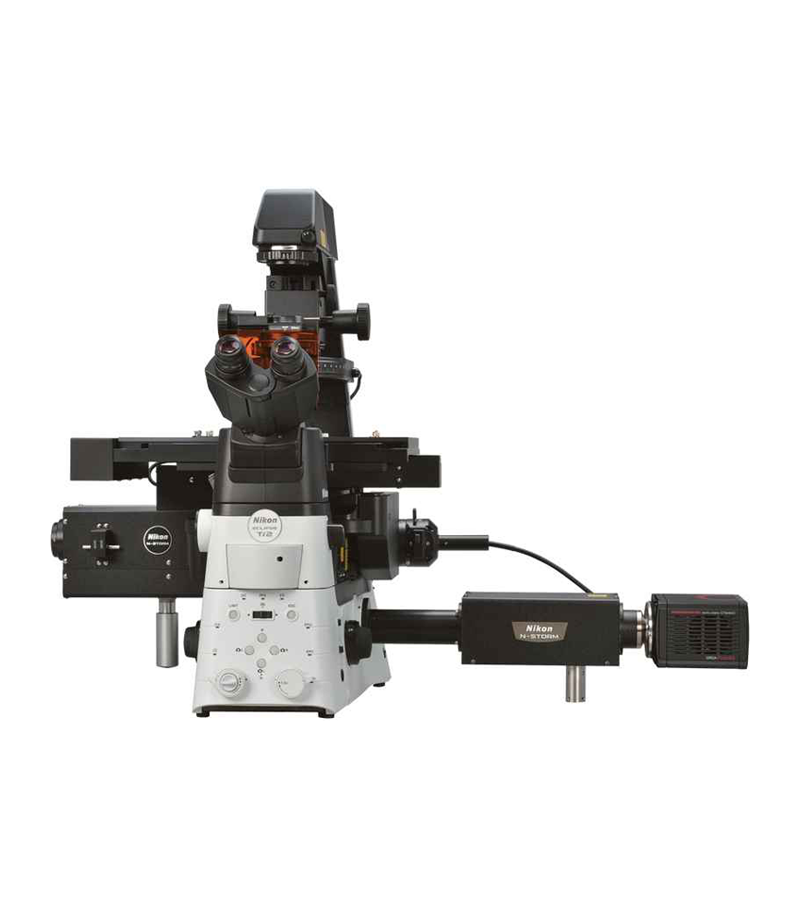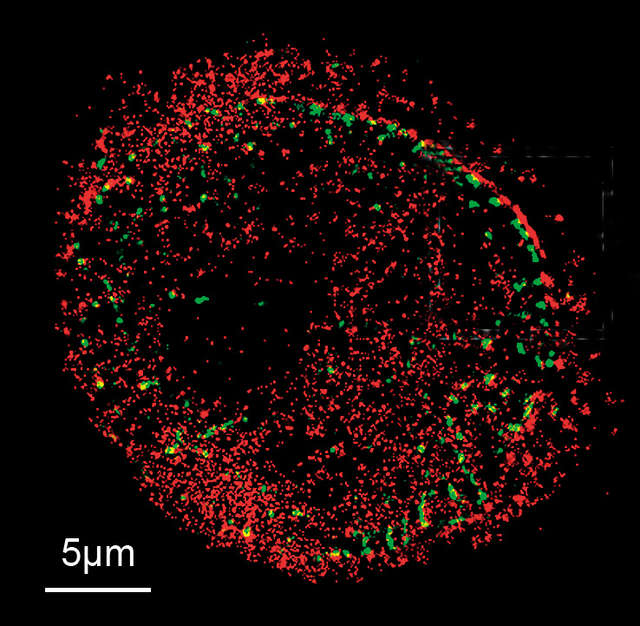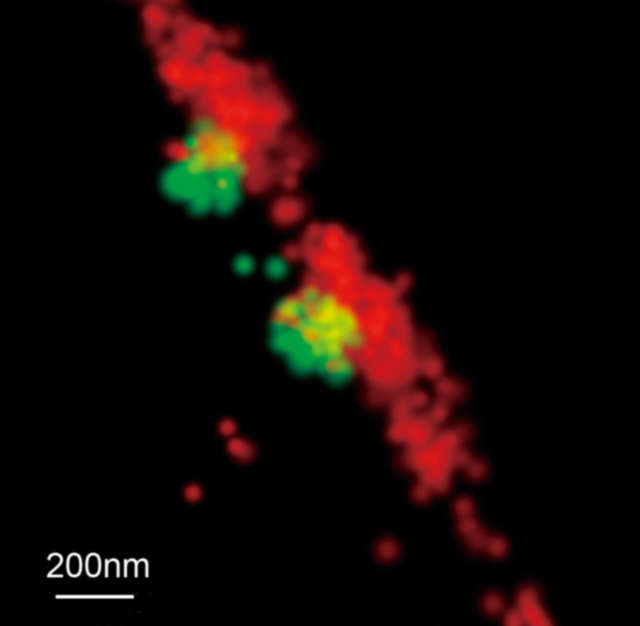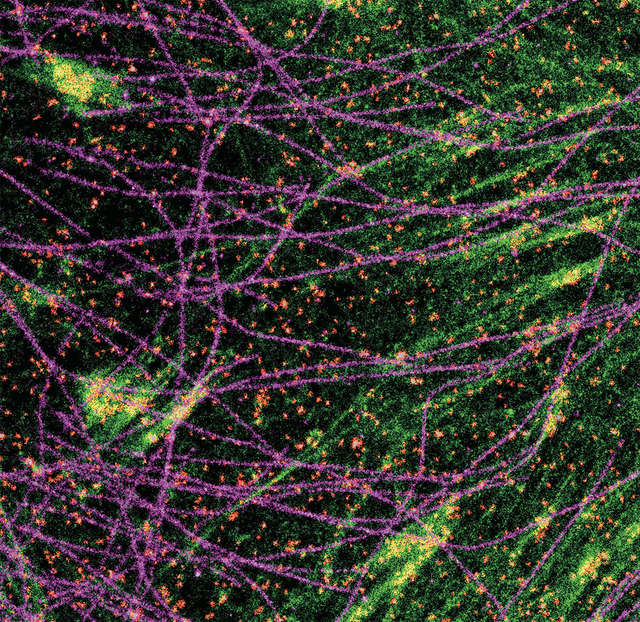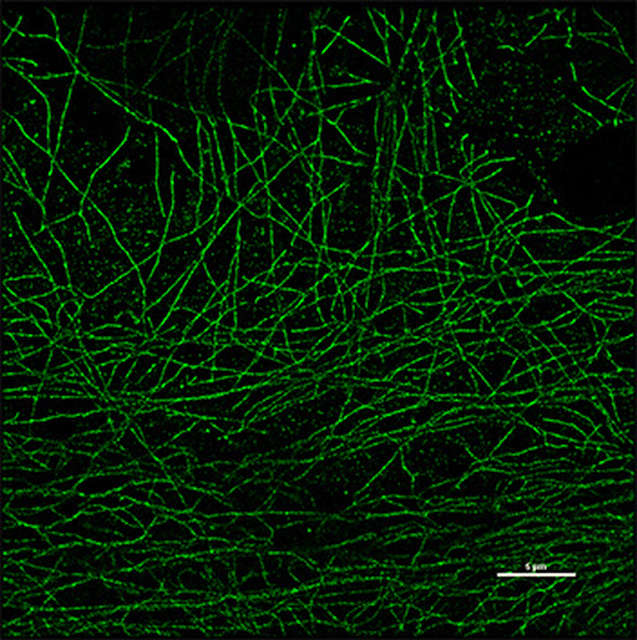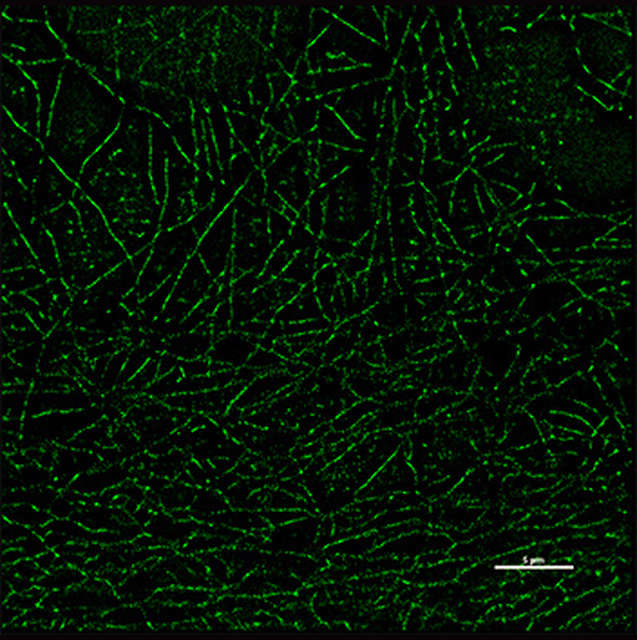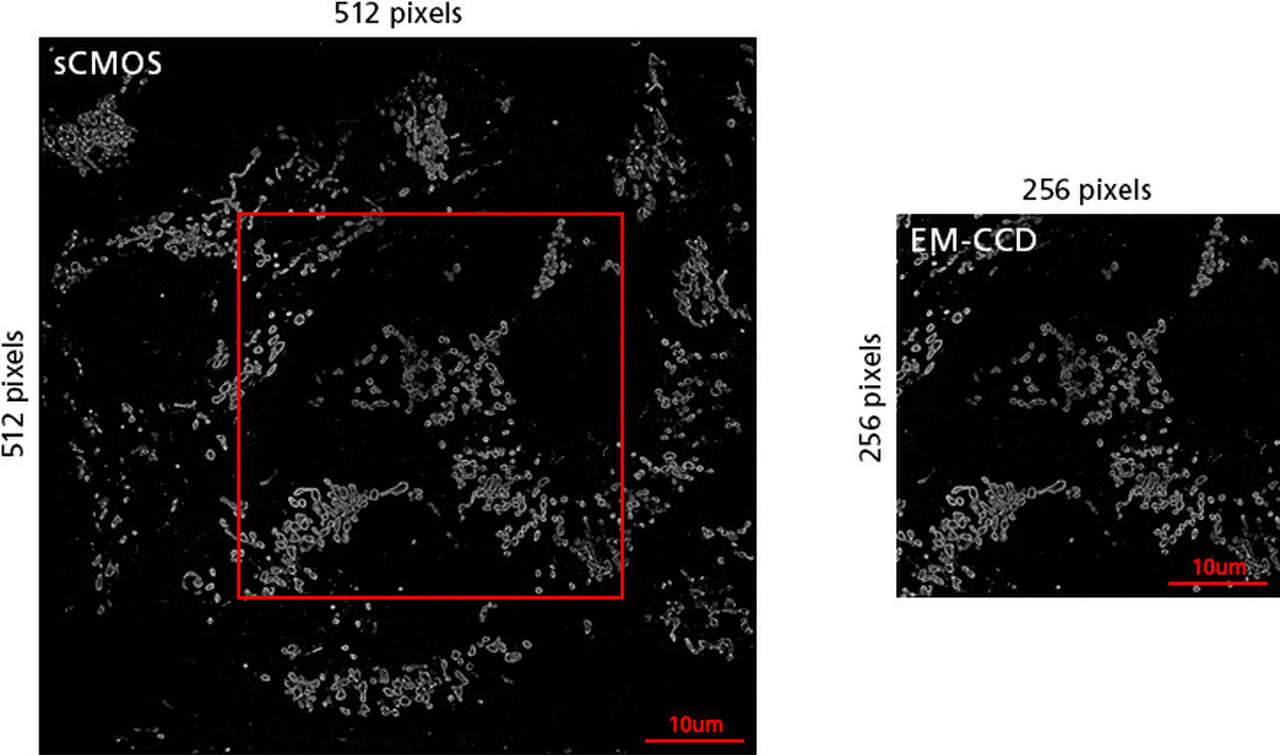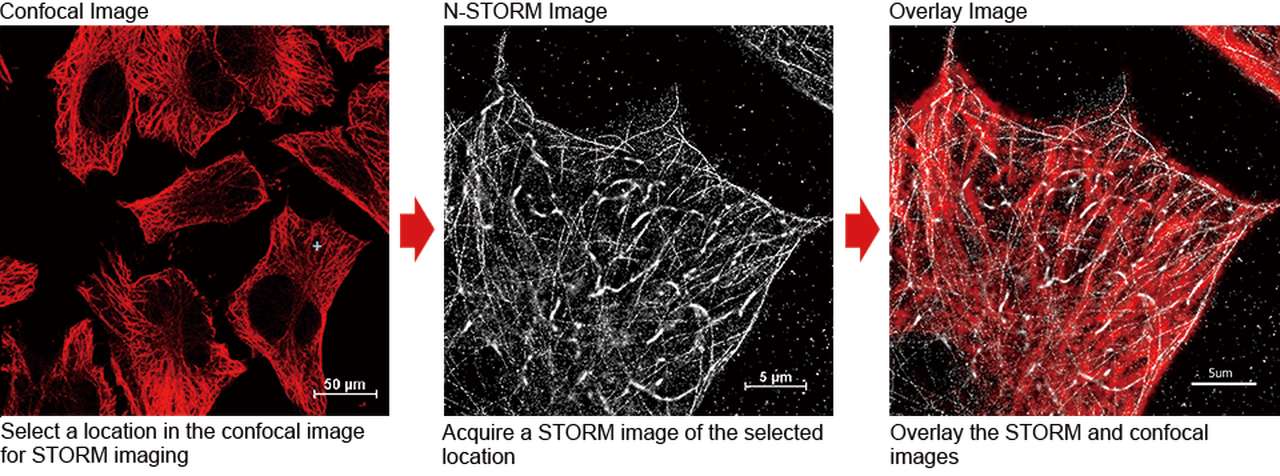주요 특징들
Tenfold improvement of axial resolution up to 50 nm
In addition to lateral super-resolution, N-STORM utilizes proprietary methods to achieve a tenfold enhancement in axial resolution over conventional light microscopes and provide nanoscale information in 3D.
The 3D-Stack function allows multiple 3D STORM images from different Z positions to be captured and stitched into one image to create thicker STORM images.
Tenfold improvement of lateral resolution up to 20nm
N-STORM utilizes high accuracy localization information for thousands of individual fluorophores present in a field of view to create breathtaking "super-resolution" images, exhibiting spatial resolution that is 10 times greater than conventional optical microscopes.
- Human cervical cancer cells (HeLa S3) labeled with Alexa Fluor ® 647 (NUP153) and ATTO 488 (TPR)
- Photos courtesy of: Dr. Michael W. Davidson, National High Magnetic Field Laboratory, Florida State University
Dynamic super-resolution imaging
Newly developed optics and illumination systems, optimized for sCMOS technology, have increased image acquisition speeds by up to 10 times. With acquisition times reduced from minutes to seconds*, dynamic events in live specimens can now be captured with molecular level resolution.
Multi-color imaging capability
Multi-color super-resolution imaging can be carried out using both activator-reporter pairs for sequential activation imaging and activator-free labels for continuous activation imaging. This flexibility allows users to easily gain critical insights into the localization and interaction properties of multiple proteins at the molecular level.
High definition, high density images
Newly developed excitation optics and improved image acquisition rates provide increased molecule localization density, resulting in clearer images of macromolecular structures.
- Left: Improved image quality, Right: Before improvement
- Scale bar: 5µm
- Super-resolution image quality is significantly improved in the same imaging time.
- Sample: Tubulin of BSC-1 cell labeled with Alexa Fluor® 647, acquisition time: 20 seconds
Large image acquisition area
New intermediate zoom lenses in the imaging system have been developed and optimized for a wide field of view. The wide-view mode achieves 80 μm x 80 μm, a 4-fold increase in imaging area compared to previous models.
Seamless switching between imaging modalities for multi-scale experiments
The N-STORM can be simultaneously combined with a confocal microscope such as the AX/AX R. A desired location in a sample can be specified in a low-magnification/large FOV confocal image and acquired in super-resolution by simply switching the imaging method. Combining a confocal microscope with a super-resolution system can provide a method for gaining larger contextual views of the super-resolution information.


